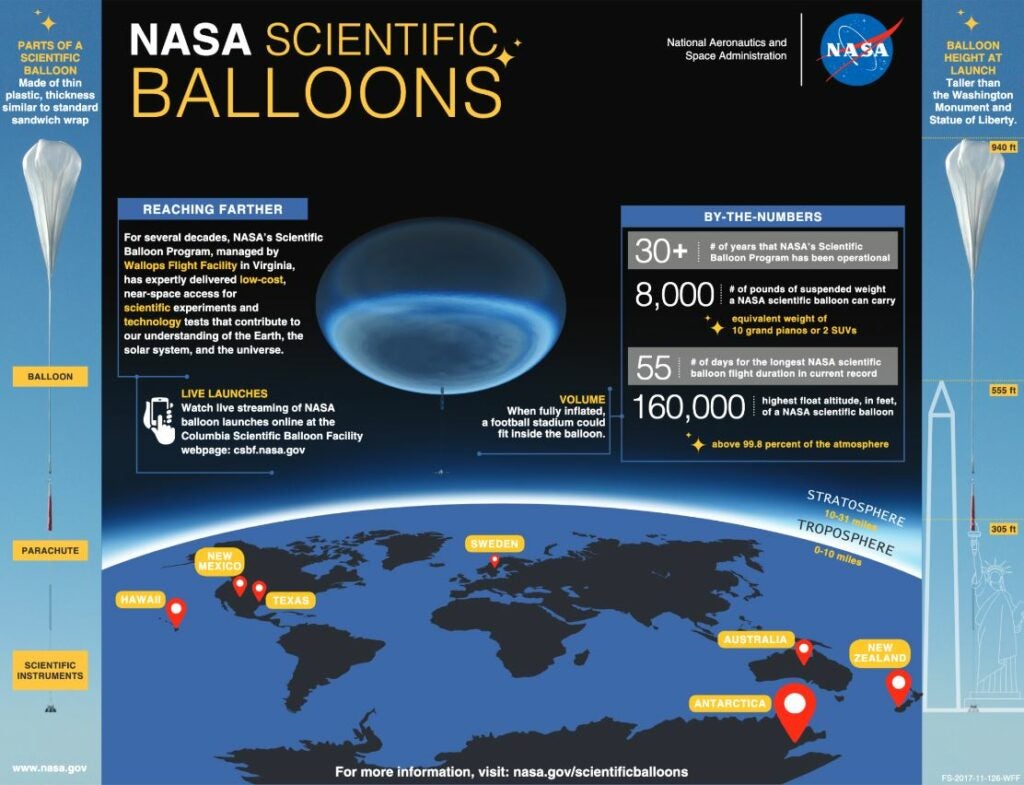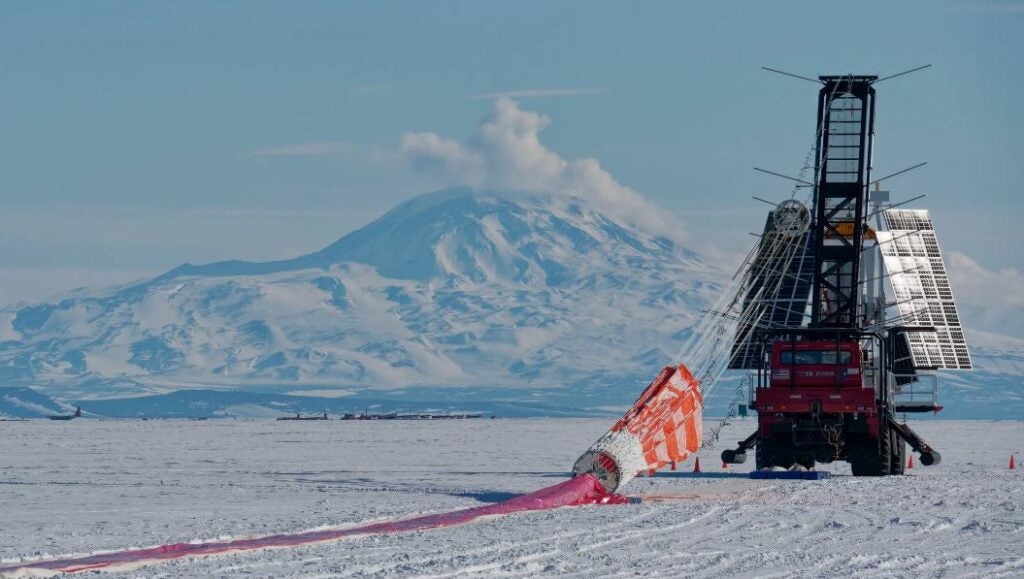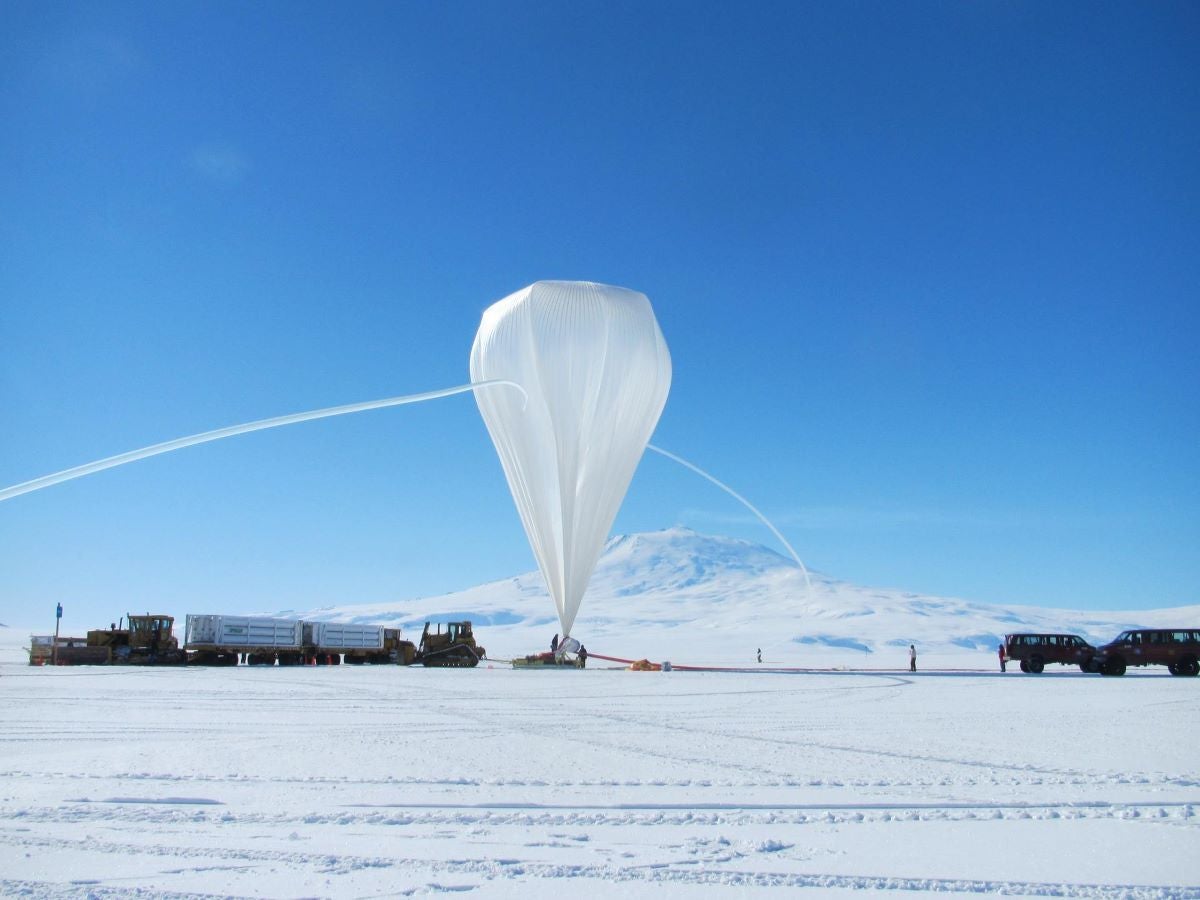For weeks, NASA researchers have been exploring the universe—by balloon.
The space agency successfully launched the Galactic/Extragalactic ULDB Spectroscopic Terahertz Observatory (GUSTO) scientific balloon December 31 from McMurdo Station in Antarctica in order to map portion of the Milky Way and nearby Large Magellanic Cloud (LMC). The telescope tethered to the balloon is collecting data that will be used in the making of a 3D map of the Milky Way and the LMC dwarf galaxy near it using high-frequency radio waves.
“By studying the LMC and comparing it to the Milky Way, we’ll be able to understand how galaxies evolve from the early universe until now,” Chris Walker, GUSTO principal investigator, said in a statement.
On Wednesday, NASA reported that the balloon mission was maintaining its course while circumnavigating the South Pole.
The scientific balloon mission is measuring emissions from the material between stars to help scientists determine the life cycle of interstellar gas in the Milky Way galaxy. The floating observatory collects data at an altitude of about 128,000 feet then it transmits it back to a team on the ground.

The balloon is “so large it could easily fit 195 blimps inside of it,” according to NASA, which is hoping the mission will break the record of 55-plus days in flight.
In October, a NASA C-130 Hercules made its first flight to Antarctica to deliver the GUSTO to McMurdo Station.
- READ MORE: NASA C-130 Makes First Flight to Antarctica
Antarctica is an ideal location to launch long-duration balloons during the Southern Hemisphere’s summer because the constant sunlight helps stabilize the balloons, and the atmospheric zone around the South Pole allows them to fly in circles without disturbance.

“Missions will fly in circles around the South Pole for days or weeks at a time, which is really valuable to the science community,” said Andrew Hamilton, chief of the NASA Balloon Program Office at the Wallops Flight Facility in Virginia. “The longer they have for observation, the more science they can get.”
The GUSTO mission may be tracked in real time here.
